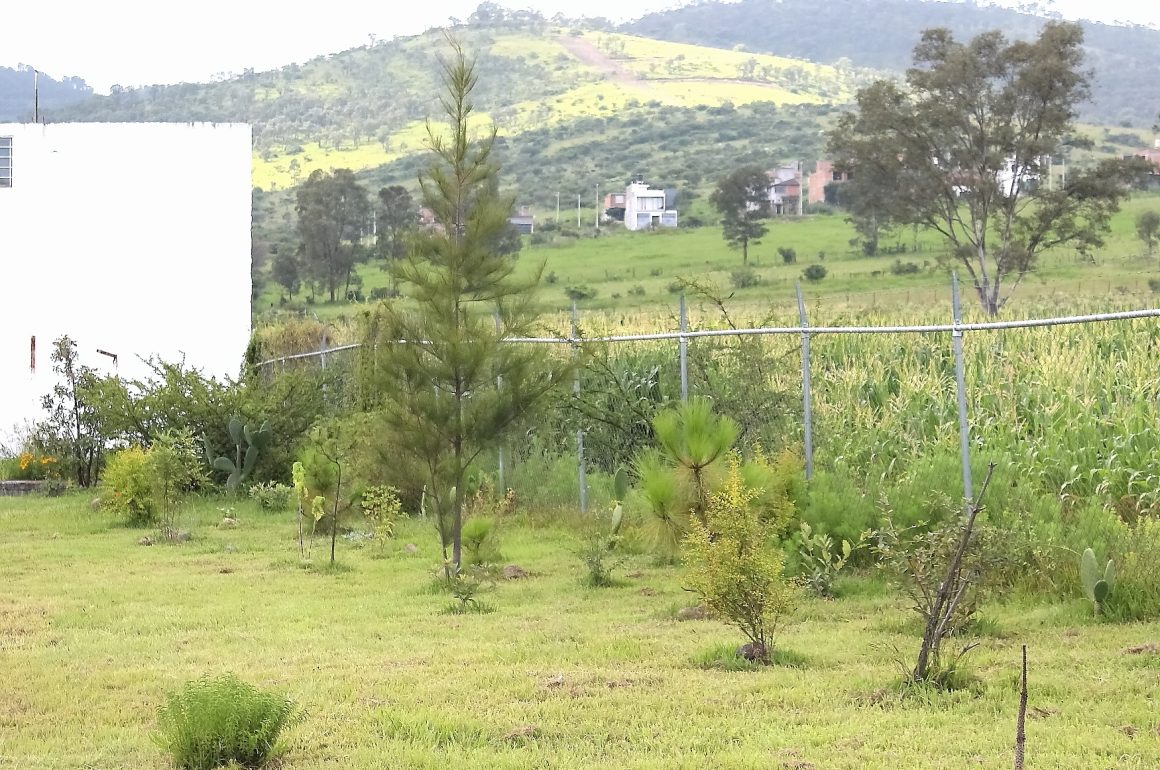
One of the nice things about receiving no pay for our contributions as writers to 10,000 Birds is that I get to pretty much write about whatever strange ramblings I choose. Which, of late, has had to do with the intersection of birding and gardening.
Back in 2021 I wrote my first post about my small afforestation project on the one acre / half hectare property of the church in Morelia which we built nine years earlier. I explained that afforestation involves planting a forest where one did not previously exist, as opposed to reforestation, which involves restoring a previously existing forest. I also stated that this project is a response to the frustration of seeing some of my favorite sites around here gradually lose their forest cover. So I decided to try to create my own little forest. With some 20 native species, and counting.
I wrote an update to this project in 2022, and some of my “trees” had just begun to stretch out. But I realized recently that I had provided no updates since then. And yet, my little project carries on, with some 26 oaks, 19 of which I started from acorns, eleven Michoacán pines, and a couple dozen other native trees I planted, as well as quite a few that I have cared for after they turned up on their own.
I recently read (and already quoted) this rule for growing native plants: “The first year, they sleep; the second, they creep; and the third year, they leap.” This rule has proven true in my church lot. At the very least, church members no longer look at me as if I were crazy when I talk about my “trees”, as you can actually see them now. Some of them are big enough that I decided to use a garden rake as scale. This photo shows that the rake is a good bit more than 5 feet long (about 1.6 m). For scale, I am 5 feet 8 inches tall (1.75 m).
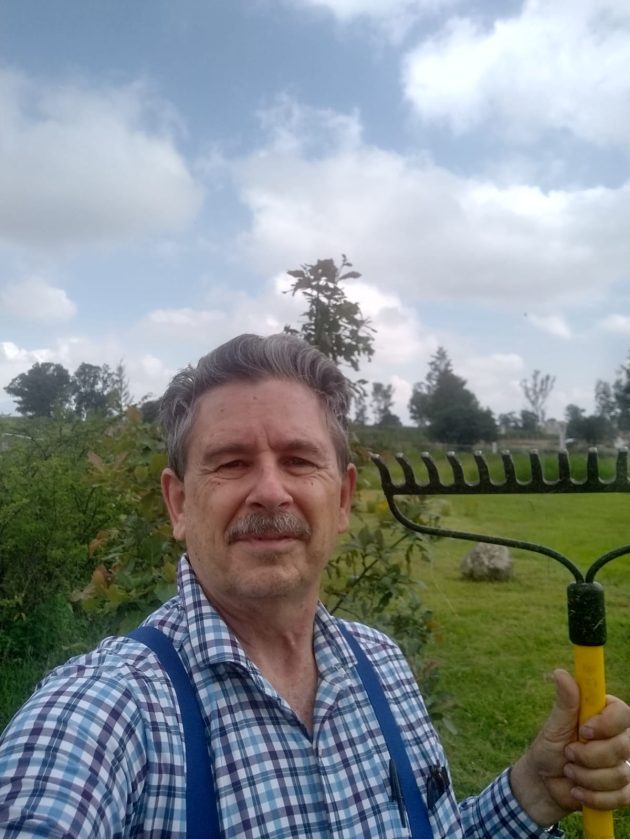
Not my best photo. But the rake looks good.
A church member gave me a small Casuarina. It is the one non-native, but Casuarinas are beloved by Lesser Goldfinches, so I planted it with the natives. It is now by far the tallest of all my plants. But I am prouder of a native oak I was given when it was only inches tall, as well as a small Mexican Hawthorn (Tejocote) which is now rather large and bears fruit each year, a long-suffering but lovely Montezuma Bald Cypress (Ahuehuete), and the one surviving nursery-bought pine, now high-branched after surviving a couple of brush fires. The next photo shows the largest of the Michoacán pines I obtained from reforestation nurseries.
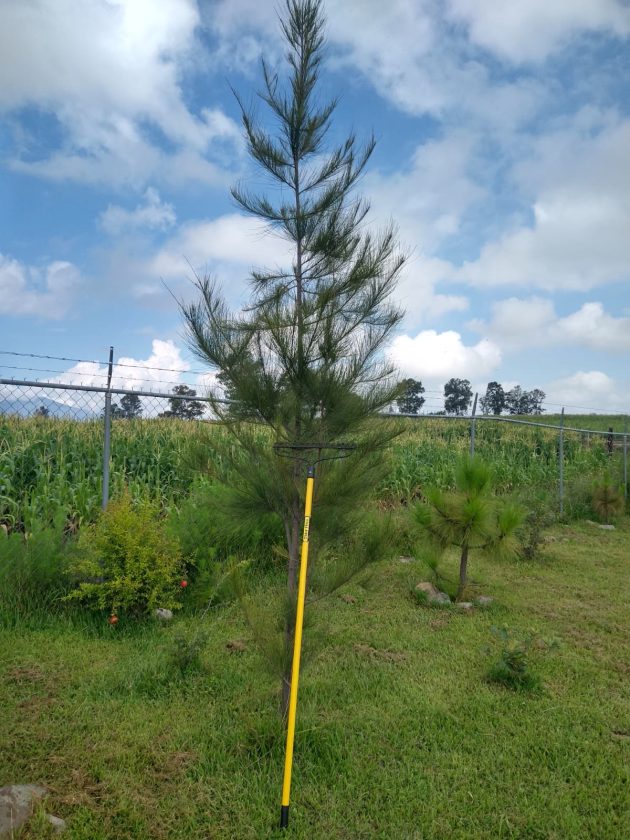
that tall Casuarina
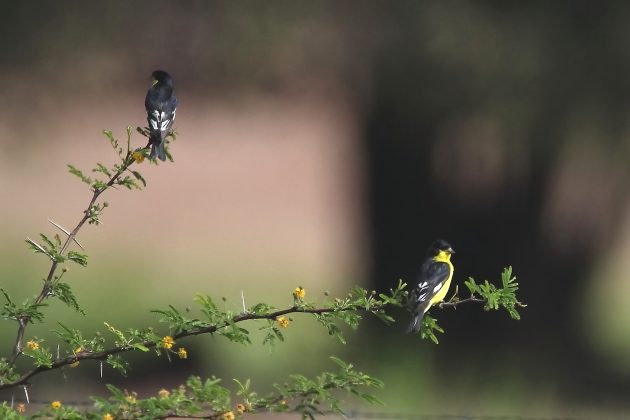
And those lovely Goldfinches
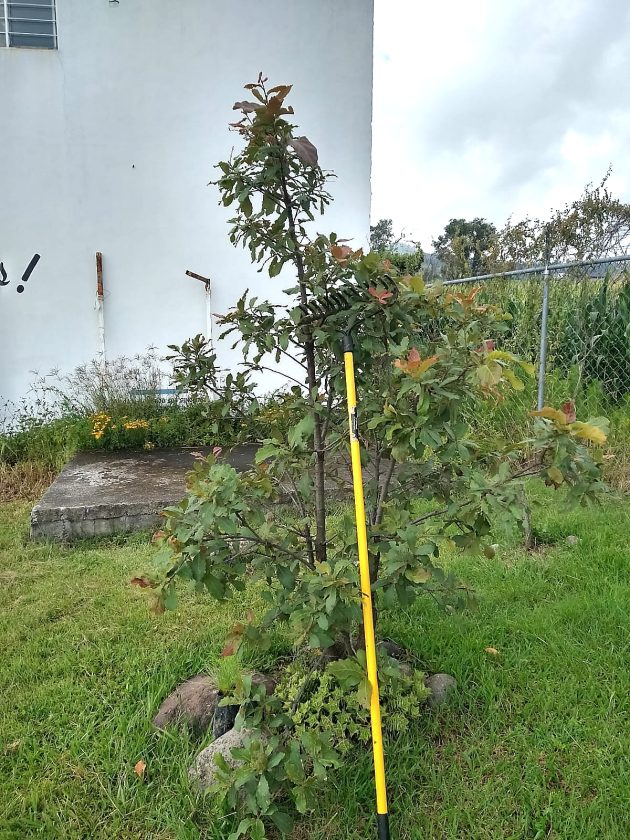
This native oak is much smaller than the Casuarina, but not bad. It grew a full meter/yard one year, once it started “leaping”.
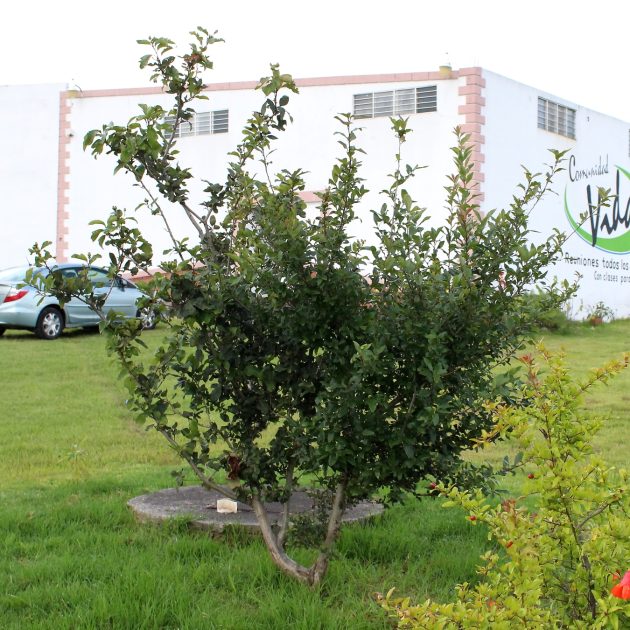
This Tejocote is the same height as that oak, but much wider… and bearing bird-feeding fruit.
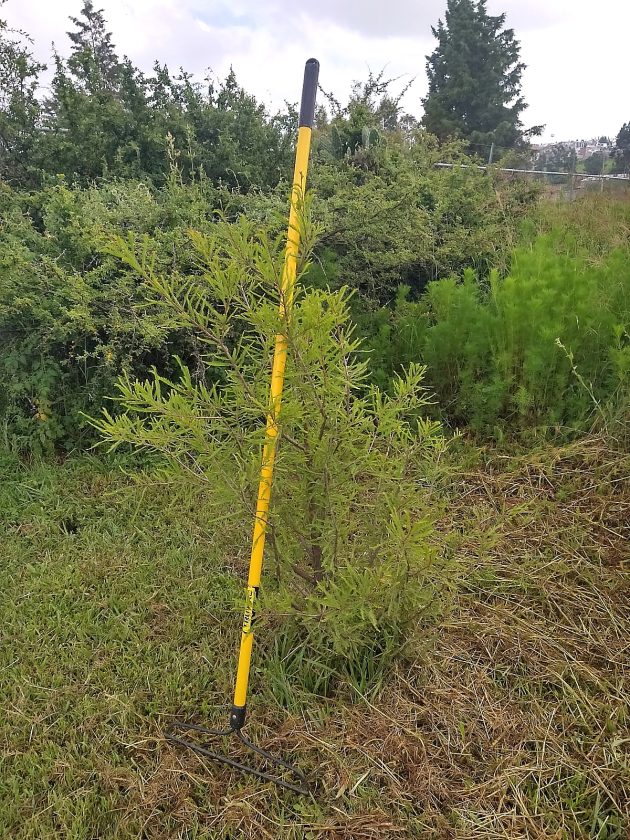
My one Ahuehuete loves this marshy spot in the summer, and so far has survived our bone-dry winters. Ahuehuetes can be seen growing in swamps and in the middle of rivers.
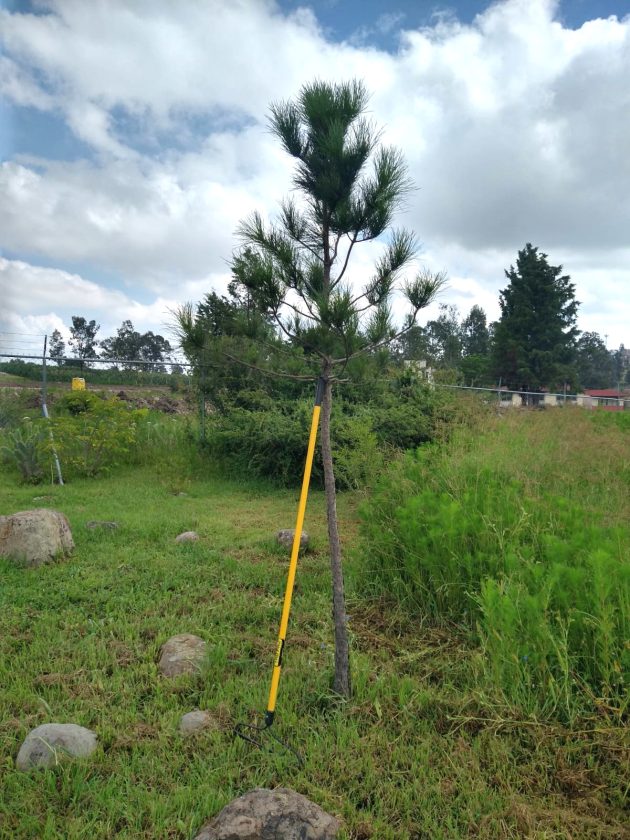
This pine, purchased from a nursery, is the only one left from when the lot still suffered annual brushfires.
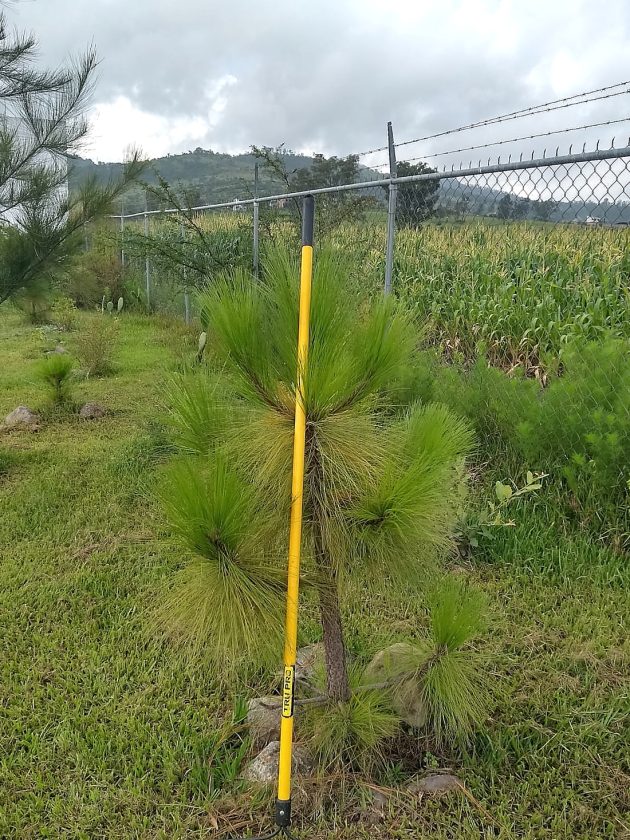
I tried multiple pine species from a reforestation nursery, but only Michoacán Pines, with their extra-long needles, have thrived.
Other green patches planted themselves, although I have worked to protect them from more brush fires and being overwhelmed by annual natives. The patch shown below began with pioneering Huizaches (Sweet Acacia), which then gave shade to the seedlings of much more bird-friendly Granjenos (Spiny Hackberry), a Prickly Pear, and another tree at the left which bears small purple fruits.. Both plants have now outgrown the Huizaches and can be seen above them in the back of this photo. Wild-growing cherry tomatoes have also established themselves in this jumble; they were clearly brought there by birds, which have been spreading them from one perch to the next. Both the tomatoes and the Granjenos have now become valuable food sources, and just in time, as a wonderfully birdy Granjeno/Prickly Pear hedgerow nearby was cut down just two months ago for the construction of a four-lane road. The fruits of both are a major source of food for birds, and spiny Granjenos also provide great shelter.
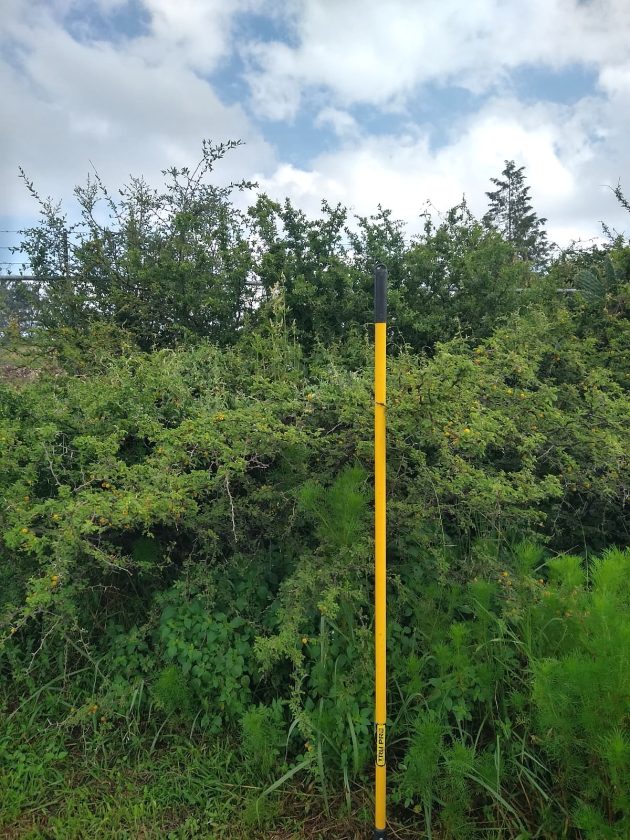
Having featured the largest of my plants at this time, I must mention that there are little new seedlings and saplings in between them all. Here are a pair of new oak seedlings, from this year’s crop.
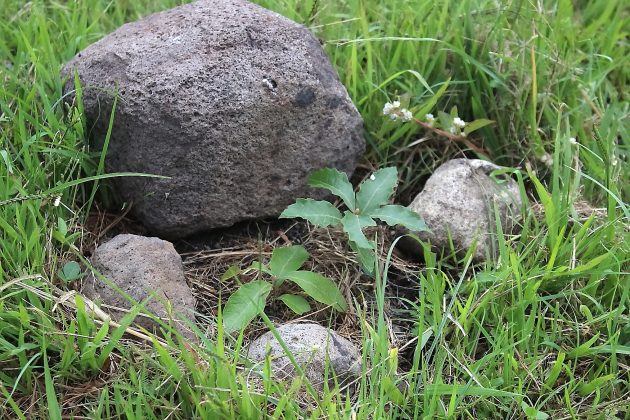
And what does all of this mean to the birds so far? Well, the Broad-billed Hummingbirds certainly are happy with the other various Salvia species I have added to the local wispy blue ones that always grew on the lot.
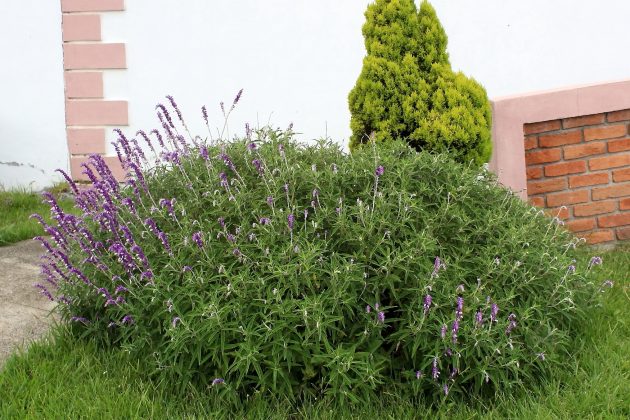
Mexican Bush Sage, Salvia leucantha, a hummer’s delight
And a Curve-billed Thrasher raised a couple of broods this spring deep within the thorny heart of a self-sown Prickly Pear cactus. I never did get a good look at the nest itself. Could you? The second photo shows one of the progeny produced, as adults do not have that spotted breast.
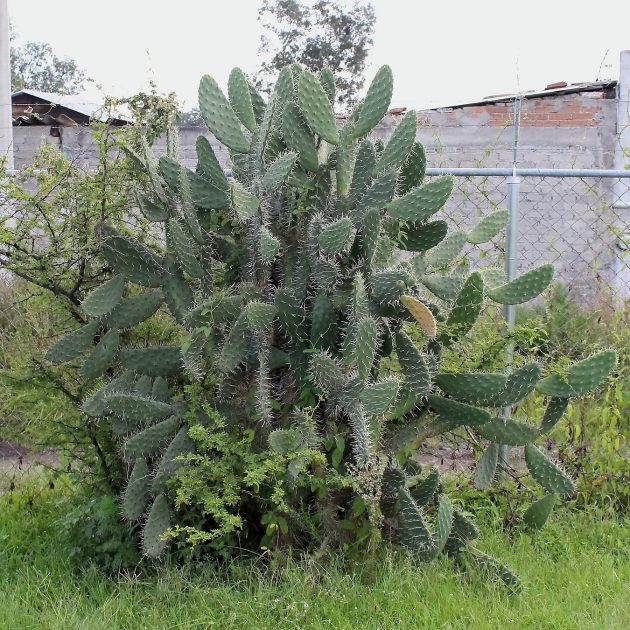
Home, sweet home — if you are a Thrasher.
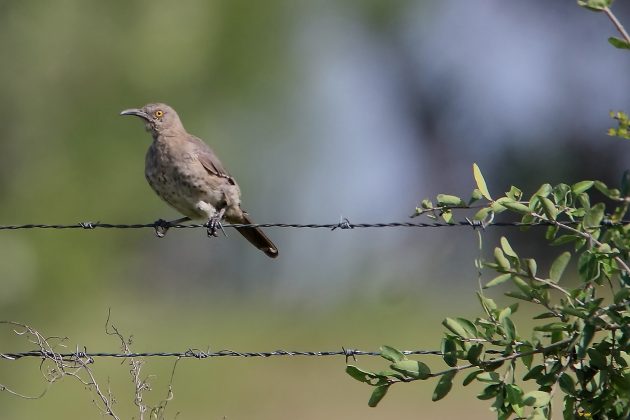
The same is true for the streaked breast and yellow vent of this female Vermilion Flycatcher, which is also immature. Was it born on the church property? I don’t know.
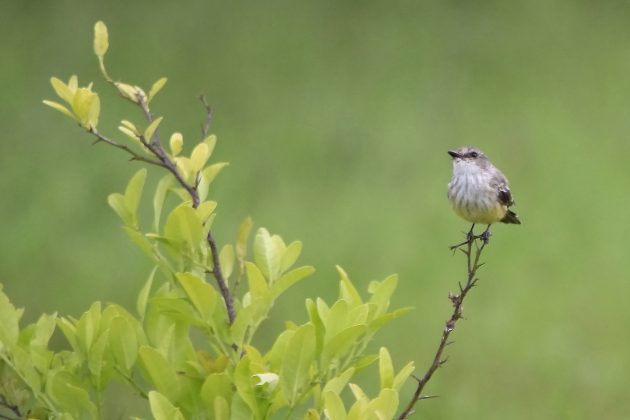
I can’t really be sure that the bird population on our lot has gone up much with my efforts. But I like to think that this 60 m stretch of young trees might already be a refuge for some of the birds that have lost their homes with the gradual development of this area on the growing edge of Morelia. As well as the small meadow patch that I am protecting alongside that 200 ft/60 m row of trees:
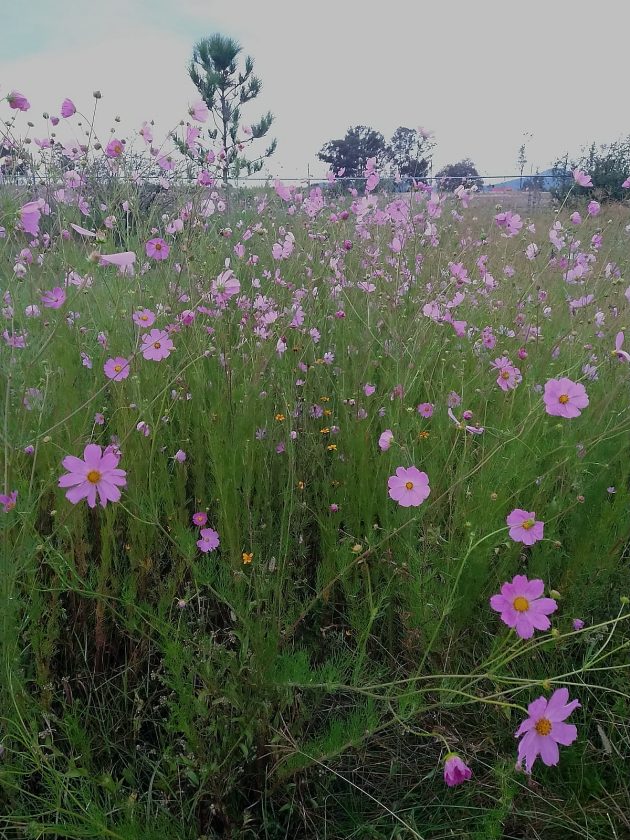
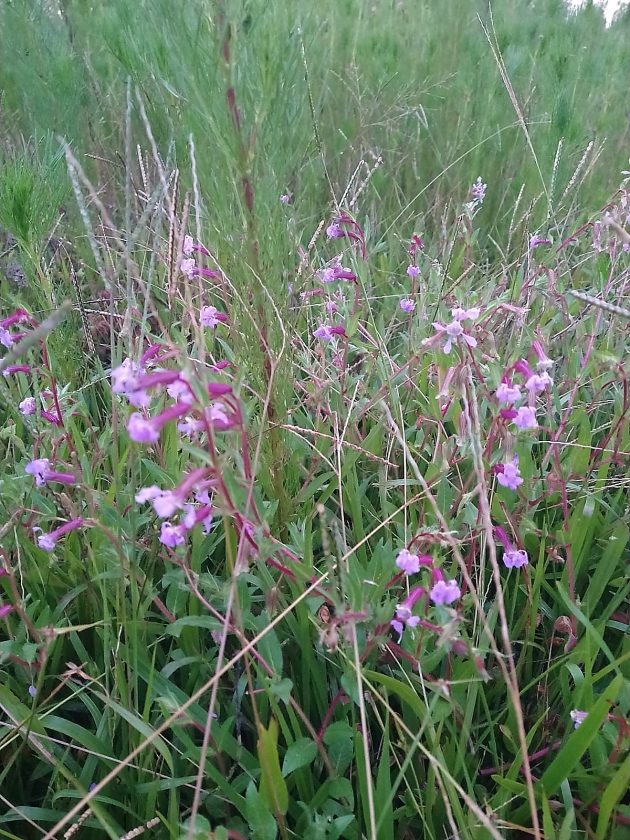
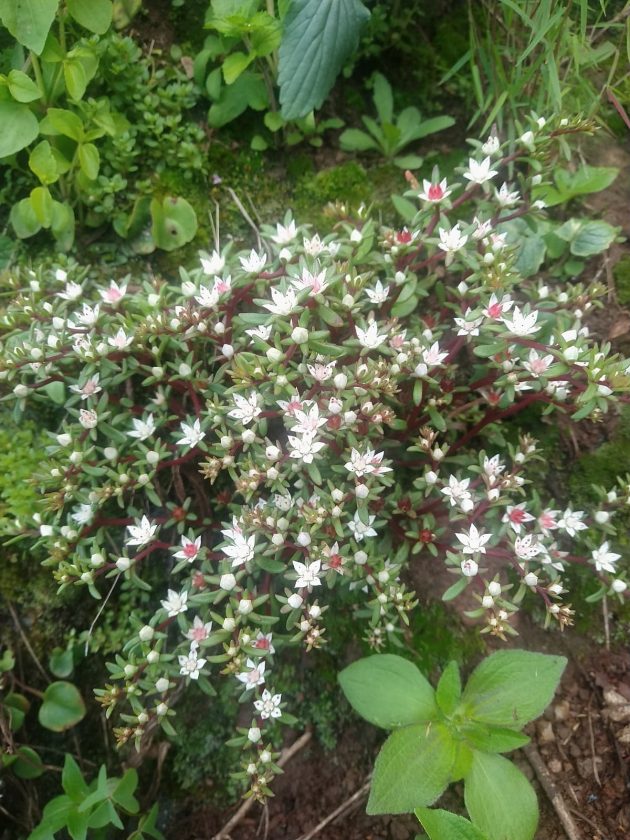
As to why I am writing about this, I would refer to the study published in Science which found that North America has lost 30% of its bird population since 1970. Without a doubt, habitat loss is the major cause of this loss. So if each of us can restore a bit of that habitat lost, we might be able to help turn things around. And if the members of a small congregation can learn about concepts like native vs. introduced plants, composting, and habitat restoration, well, so much the better.
(Oh, and one more thing: A project like this is a lot of work. But it sure beats going to the gym!)
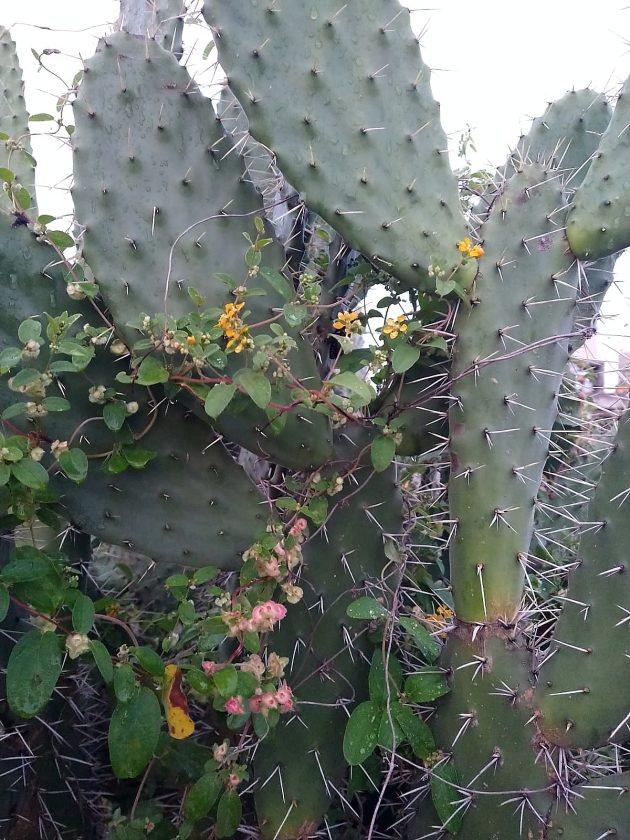
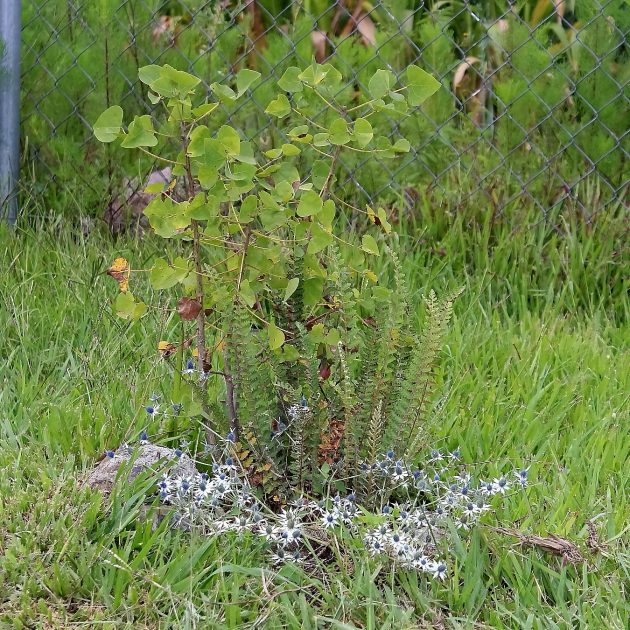


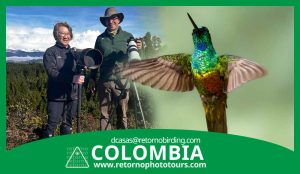



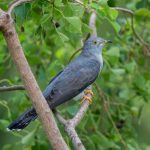
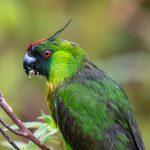

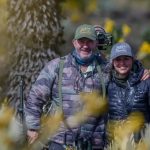
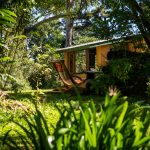
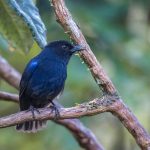
You look rather rakish, Paul… sorry, couldn’t help myself there. Nice post about a topic close to my heart and profession!!!